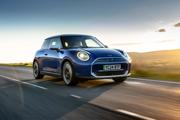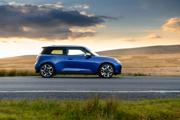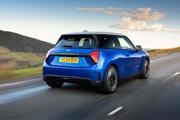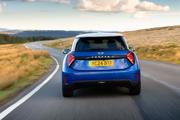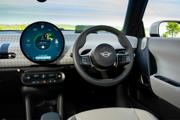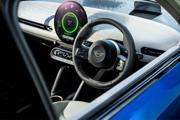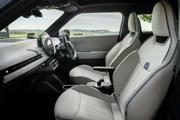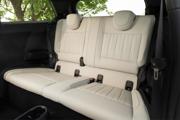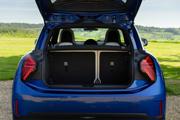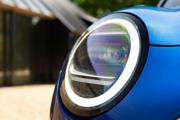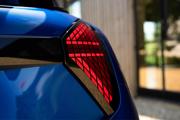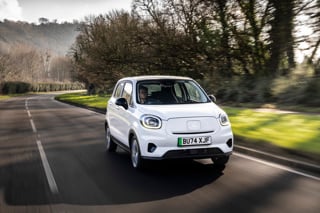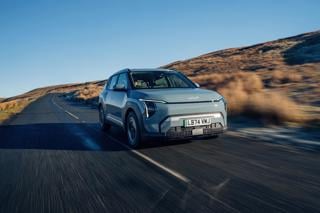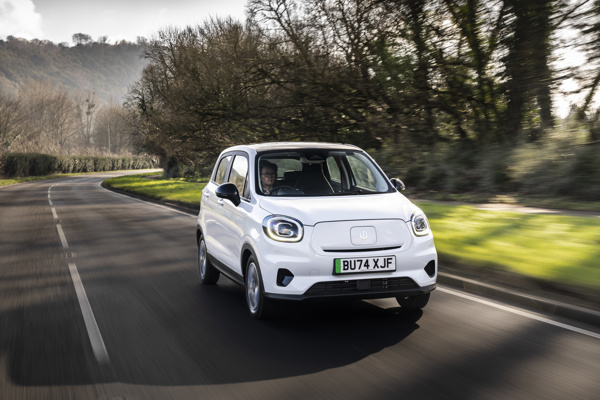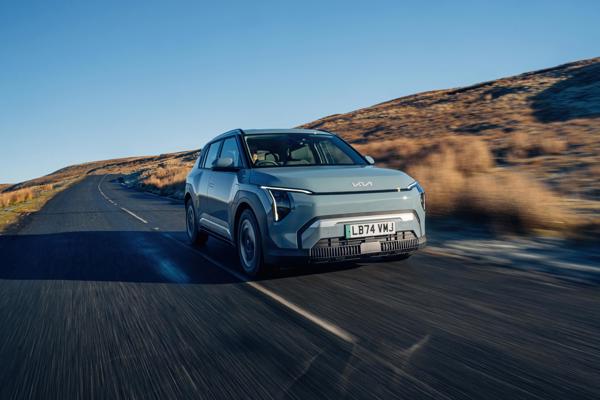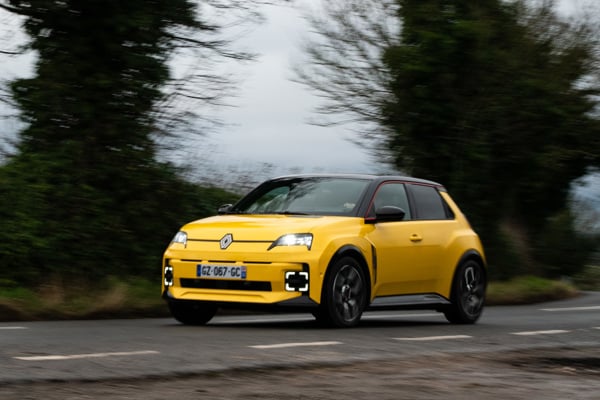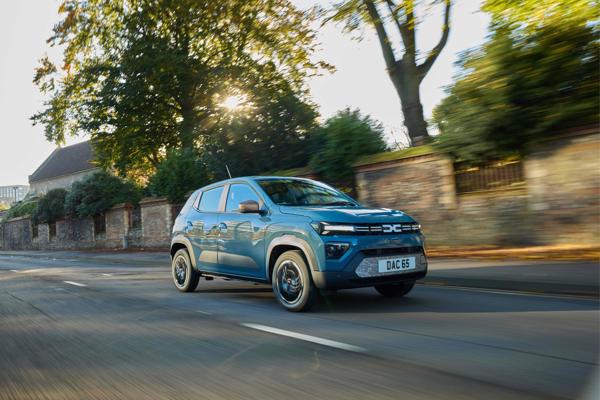Review
Mini’s first electric hatch didn’t quite live up to expectations, but this second-generation model is all-new and significantly better. It has great tech, a longer range and excellent driveability. Fleet costs are favourable too.
Overview
It might not look particularly different, but this new Mini hatch has come on leaps and bounds from its predecessor.
The previous generation Mini was far from a bad car, it just didn’t work particularly well with an electric powertrain. The real-world range was poor because only a small battery could be squeezed into the floor.
For generation five, Mini has built a new platform. It enables larger batteries, more powerful motors and advanced technology. The upshot? More range and better performance.
The three-door Mini is now known simply as the Mini Cooper. There are two electric variants – E and SE – along with a pair of petrol options. This review is focused on the Mini Cooper Electric.
Prices start at £30,000 for the Mini Cooper E Classic. Sport and Exclusive trims are also offered.
Comfort and practicality
Overall dimensions have hardly changed, and the Mini Cooper remains one of the smallest cars in its class. It’s only available in a three-door configuration, too, so there’s less practicality than you’d get from an Audi A1 or a Toyota Yaris.
The Mini does claw back some points for its high-quality interior, which looks and feels both modern and upmarket.
There’s a textile covering on the dashboard and the materials used throughout are robust and tactile. The minimalist layout makes the interior feel more spacious, as well as futuristic.
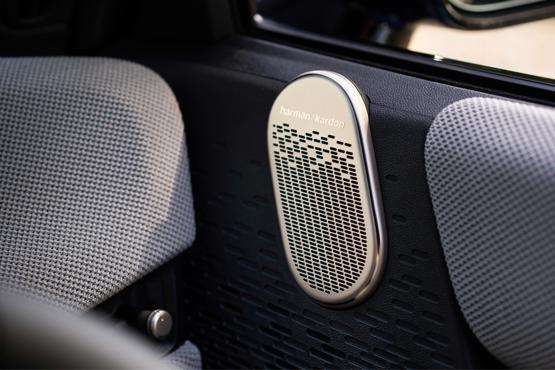
Headroom is impressive and the Mini’s seats are comfortable and supportive. While you sit low compared to most other cars on the road, the driving position has plenty of adjustability and even tall drivers can endure long journeys without too much bother.
Rear seat space is cramped, as you might expect, but a couple of adults can squeeze themselves in there if required. The Mini Cooper is best considered a two-seater, in the main.
Boot space is also tight. The Mini has a boot capacity of 211 litres, which is a fair bit smaller than what is offered in the Peugeot e-208. It is more spacious than a Fiat 500e, however.
Folding the rear seats gives a larger load area of 800 litres. With the seats up or down, you’ll also need to consider storage of the charging cables, as there’s no specific cubby hole to stash them in.
Safety and technology
In keeping with Mini’s minimalist theme, on board technology is confined to a single central infotainment screen. The circular display provides all the infotainment functions, climate controls and acts as an instrument cluster.
It’s a lot to ask from a small touchscreen. Mini’s operating system is smart and responsive, but there’s a multitude of displays and menus to swipe through. Using the system on the move can be a little tricky, however there’s a voice control system that can perform most tasks.
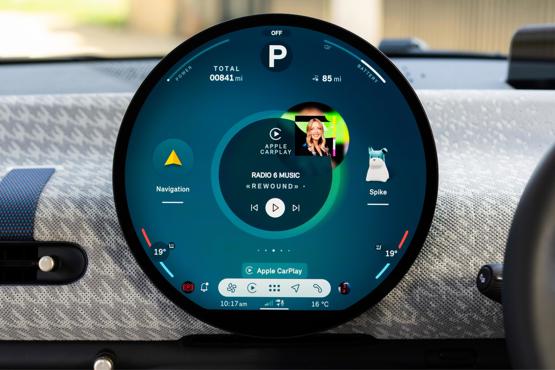
We’re not too keen in the integration of the speedometer into the display either. Thankfully models with the Level 1 equipment package (2,000 – or standard on Cooper SE) include a head-up display. The pack is a ‘must-have’ in our opinion, also adding heated front seats, folding door mirrors, comfort access and high beam assistant.
All Mini Cooper models come with parking sensors, rear-view camera, blind spot monitoring and lane keep assist. Adaptive cruise control only comes on the range-topping Sport grade with the Level 3 equipment package. Lower-grade models with the Level 2 pack are set-up for the function but it needs to be activated via a subscription.
Driveability and range
The Cooper E is equipped with a 40.7 kWh battery, which provides up to 190 miles of electric range (WLTP). A 184PS electric motor, with 290Nm of torque, accelerates the car from 0 to 62mph in 7.3 seconds.
With an output of 218PS, the Cooper SE sprints from 0 to 62mph in 6.7 seconds with a maximum torque of 330 Nm. It also has a longer range, thanks to a 54.2kWh battery, of 250 miles.
In real-world driving the performance difference between the two cars is negligible. This is largely due to the SE’s larger battery adding weight.
The Cooper E tips the scales at 1,540Kg – around 250Kg more than a petrol-powered Mini. The SE adds another 65 kilos.
Suspension differences between the E and the SE mean the longer-range car offers a slightly better ride. Both cars are firm and offering excellent agility.
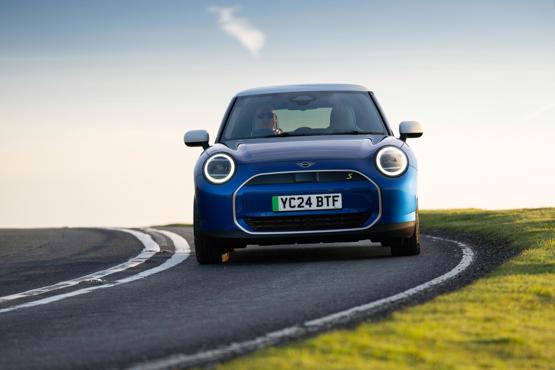
The Mini Cooper electric is easily the best-handling model in its segment, offering great driveability and strong, responsive performance in either guise.
In real-world driving, both cars were returning around 4.0mi/kWh. We’d estimate that a range of around 160 miles for the Cooper E and 210 miles in the Cooper SE should be possible.
Refinement is high for a small car. There’s not a great deal of intrusive wind or tyre noise and the Mini feels stable and planted at higher speeds, making it well-suited to higher-mileage users.
Charging speeds aren’t groundbreaking. All models support 11kW AC charging and DC rapid charging is possible at 70kW on the Cooper E and 95kW on the Cooper SE. This means a 10% - 80% charge will take around half an hour on either model.
Company car tax and running costs
The Mini Cooper E undercuts its closest rival, the Peugeot E-208 on both price and running costs. At less than 35p per mile (4 year/80k) the £30,000 Mini represents excellent value for money for fleets. Comparatively, the Peugeot starts at £31,690 and has a 45ppm cost.
Even the Cooper SE, in Exclusive trim, represents good value at £36,645. With a desirable spec and longer range, this would be our pick of the line-up. Running costs remain low at 41ppm.
Company car drivers will pay 2% benefit-in-kind tax – starting from £10 per month for the base model.
Use the Fleet News Company Car Tax Calculator to view and compare running costs.
Specs
| Manufacturer | MINI |
| Model | Cooper Hatchback |
| Specification | MINI Cooper Electric Hatchback 135kW E Classic 41kWh 3dr Auto |
| Model Year | 2023.00 |
| Annual VED (Road tax) | £10 |
| BIK List Price | £26,840 |
| Range | 185.80mile(s) |
| CO2 | N/A |
| BIK Percentage | 2% |
| Insurance Group | N/A |
| CC | 1 |
| Fuel Type | Electric |
| Vehicle Type | Small car |
| Luggage capacity (Seats up) | 210litres |
| Doors | 3 |
Running Costs
| P11D | £26,840 |
| Cost per mile | 28.47ppm |
| Residual value | £12,525 |
| Insurance group | N/A |
| Fuel Type | Electric |
| Cost per mile | 84.59ppm |
| Fuel | 1.99ppm |
| Depreciation | 82.20ppm |
| Service maintenance and repair | 0.40ppm |
Rivals
Info at a glance
-
P11D Price
£26,840
-
MPG
N/A (WLTP) -
CO2 Emissions
N/A -
BIK %
2% -
Running cost
3 Year 60k : £12,525 4 Year 80k : £10,400 -
Fuel Type
Electric -
Range
185.80mile(s)




